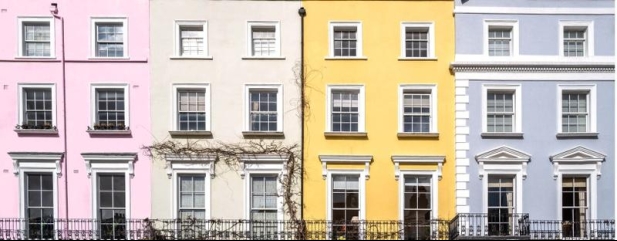Archived article
Please note that tax, investment, pension and ISA rules can change and the information and any views contained in this article may now be inaccurate.
Can property really be your pension?

If you’re thinking about using property to fund your retirement, you wouldn’t be the first. The post-financial crisis boom in house prices, propelled by low interest rates and government support schemes, led many budding property tycoons towards investing in buy-to-let instead of saving in a pension.
For many, that gamble probably paid off, thanks to the long period when mortgages were super cheap, and house prices rocketed. But the future might not be so rosy for buy to let, and those who are thinking of prioritising property investment over a pension should certainly pause for thought.
CHRONIC HOUSING SHORTAGE
The UK suffers from a chronic housing shortage, and while that makes things difficult for people trying to get on the housing ladder, it’s also supportive of prices, because demand is greater than supply.
So, house prices can still be expected to rise over time, though the same could be said of the stock market your pension might be invested in.
But the cost of buying a property is now much higher than it was because of the huge rise in interest rates we’ve witnessed over the last two and a half years. Those additional costs will eat into rental income and make buy-to-let property investment less profitable.
At the same time there have been significant tax changes in the last few years which have been to the detriment of buy to let investors. There is now an additional 3% stamp duty surcharge which is levied on the purchase of second properties. The way buy-to-let profits are taxed has also shifted unfavourably.
You used to be able to fully offset mortgage payments against your tax bill, so if you were a higher or additional rate taxpayer, this used to mean saving 40% or 45% tax. But now that saving has been restricted to just 20%.
OTHER COSTS
There are other costs to holding a property which might be easy to overlook before you experience life as a buy to let landlord. Legal fees, survey costs and stamp duty all take their toll on returns. There are ongoing maintenance and repair costs, letting fees, landlord insurance and void periods to consider, which will also make a substantial dent in rental income, before factoring in your mortgage interest.
Pensions also come with attractive perks attached which you would be missing out on if you divert your retirement savings into a buy-to-let property. Employers are now required by law to pay into a pension on your behalf, and many will match whatever you pay in. In this scenario your employer adds £100 for each £100 you contribute, doubling your money immediately.
It’s actually even better than that because you receive tax relief too, even if you’re self-employed and don’t get employer contributions. For each £100 you pay into a pension, this actually only costs you £80 if you’re a basic rate taxpayer, £60 if you’re a higher rate taxpayer and £55 if you’re an additional rate taxpayer.
You do pay tax on your pension income when you retire, but often that’s at a lower rate than the tax relief you get on the way in when you’re working and earning more money. Bear in mind property income is taxed in retirement too. And with a pension you can also take 25% of the value as a tax-free lump sum, which is another nice bonus. It’s also important to note that while in your pension, your investments grow free from income and capital gains tax. By contrast, property income is taxed as it’s received, and when you sell a second property you’re liable to capital gains tax of 18% or 24% depending on whether you’re a basic or higher rate taxpayer.
PENSION GIVES YOU MORE FLEXIBILITY
‘Decumulation’ is not a word many outside the pensions industry will recognise, but it’s an important concept. It refers to the process by which you draw down your retirement savings. Both property and a pension investment can provide you with an income stream in retirement, but with a pension you have greater flexibility.
You can sell some of your investments in a pension to supplement your income in years when you need a bit more cash. You can’t do this with a property because it’s just one unit, so you can’t sell half the living room to boost your income.
Using property as part of your retirement plan can be a successful venture, but it’s no walk in the park. For most people, using pensions and also ISAs to save for retirement will be preferable in terms of returns, costs and tax, not to mention the hassle factor.
The familiarity of bricks and mortar will no doubt mean buy-to-let property continues to be used for retirement income purposes. But even if you’re keen on this approach, make sure you do your homework and dive in with your eyes wide open, taking into account all the risks, costs and taxes first. Otherwise, you’re probably in for a few nasty shocks.
Important information:
These articles are provided by Shares magazine which is published by AJ Bell Media, a part of AJ Bell. Shares is not written by AJ Bell.
Shares is provided for your general information and use and is not a personal recommendation to invest. It is not intended to be relied upon by you in making or not making any investment decisions. The investments referred to in these articles will not be suitable for all investors. If in doubt please seek appropriate independent financial advice.
Investors acting on the information in these articles do so at their own risk and AJ Bell Media and its staff do not accept liability for losses suffered by investors as a result of their investment decisions.
 magazine
magazine








